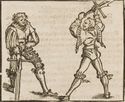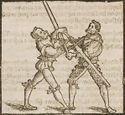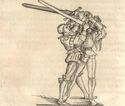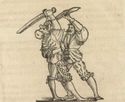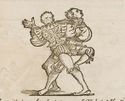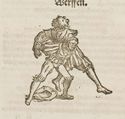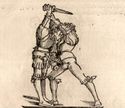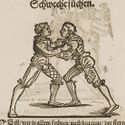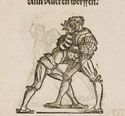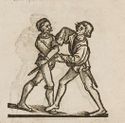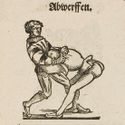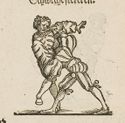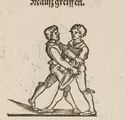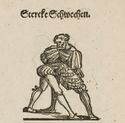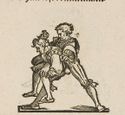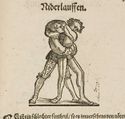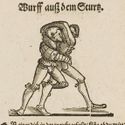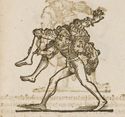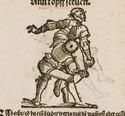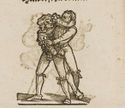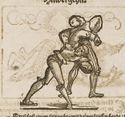|
|
You are not currently logged in. Are you accessing the unsecure (http) portal? Click here to switch to the secure portal. |
Hans Weiditz
| Hans Weiditz the Younger | |
|---|---|
| Born | 1495 Freiburg im Breisgau |
| Died | 1537 (aged 42) Bern |
| Nationality | German |
| Field | Woodcuts |
| Movement | Mannerism |
| Patrons | Cornelis Muys, Haarlem council, Delft Council |
| Influenced by | Jan van Scorel, Giorgio Vasari |
| Influenced | Karel van Mander, Hendrik Goltzius, Cornelis van Haarlem |
Hans Weiditz the Younger (1495 - ca. 1537) was a German Renaissance artist, also known as The Petrarch Master for his woodcuts illustrating Petrarch's De remediis utriusque fortunae ("Remedies for Both Good and Bad Fortune").[1] He is best known today for his very lively scenes and caricatures of working life and people, many created to illustrate the abstract philosophical maxims of Cicero and Petrarch.[2]
His father, Hans Weiditz the Elder (ca. 1475 - ca. 1516), worked in Freiburg between 1497 and 1514, and was described as a bildhower or sculptor in the Painters' Guild records. In 1505, he worked on the Dreikönigsaltar in Freiburg Cathedral. Parish records show a 1510 payment to him for carved wooden rosettes on the keystones in the chancel, working with Hans Baldung, the gifted student of Albrecht Dürer. He is not to be confused with the slightly older Strasbourg woodcut artist Hans Wechtlin.
Weiditz, a brother of Christoph Weiditz (1500 - 1559), was a prominent member of an elite group of woodcut artists including such figures as Albrecht Dürer, Hans Holbein the Younger, and Hans Burgkmair, his teacher. He was active in Augsburg between 1512 and 1522, and from 1522 to 1536 in Straßburg, producing woodcuts for book illustrations in the style of Burgkmair. He also produced notable work for an edition of Cicero's popular De Officiis in 1531, for Apuleius' The Golden Ass in 1538, and the Comedies of Plautus.[3]
Like most artists in woodcut, he only designed the woodcuts, leaving the block-cutting to a specialist formschneider (sometimes Jost de Negker in his Augsburg period) who pasted the design to the wood and chiseled the white areas away. The quality of the final woodcuts, which varies considerably, depended on the skill of the cutter as well as the artist. Weiditz was unfortunate in that his publishers went bankrupt part way through the production of his two longest series of woodcuts, and the cutting was later completed by cutters of lower skill.[2] He is credited with producing the German chiaroscuro woodcut with the greatest number of color blocks, a seven-block coat of arms of a cardinal for a book frontispiece in 1520, probably cut by Jost de Negker.[4]
HEMA Contributions
Some time after 1531, Weiditz produced a series of woodcuts for Christian Egenolff's Der Allten Fechter gründtliche Kunst ("The Ancient Fencer's Foundational Art"). These images are intricate and detailed, and are in some ways an improvement over the rudimentary figures used in the original text, Ergrundung Ritterlicher Kunst der Fechterey ("Foundation of the Chivalric Art of Swordplay").
References
- ↑ Humrich Fine Art
- ↑ 2.0 2.1 Mayor, A. Hyatt. Prints and People. Princeton: Metropolitan Museum of Art, 1971. ISBN 0691003262
- ↑ Widi:Lexikon - Computer - Wissens-Portale, Wörterbücher und Lexika - WISSEN DIGITAL
- ↑ Bartrum, Giulia. German Renaissance Prints, 1490-1550. British Museum Press, 1995. p162. ISBN 0714126047



